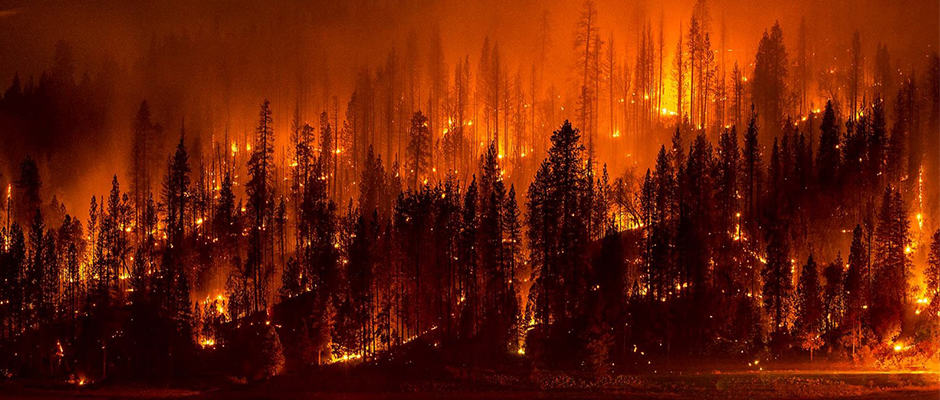Share this article
Q&A: The Effect of Wildfires on California Wildlife
Wildfires are still raging across California and while they are mostly contained, they have consumed more than 150,000 acres combined. But what happens to wildlife in fires like the Valley and Butte in California that are currently raging across the north of the state?
To get a better idea of the ways animals are affected by the flames and changed landscape, we spoke to Eric Huff, a forester with the California Department of Forestry and Fire Protection.
How do burning fires affect wildlife?
This is a complicated question, really. It depends on the duration of the fire, the intensity of the fire, the rate of spread, how quickly animal species, particularly terrestrial, have time to react to the fire. Obviously those species that have more ability to move more rapidly, whether they are avian species or terrestrial mammals, have an advantage. The question of fire intensity is really the key.
If you think about how fast the Valley Fire spread, I liken it to a dragon flying overhead and laying fire down in a pretty narrow column of fire. I imagine that there were some animals that could not get out of the way.
How about the ecosystem?
You’re going to have those [animals] that gain from these fires. You’re going to have cavity nesters, insects. You’re going to have species that will be able to feed on those that thrive in burned landscapes. There will be some net positives — I don’t know that they’ll be outweighed by the negatives.
We’re going to see a big boom in woodpeckers, maybe even some black-backed woodpeckers. You’re going to obviously see a big boom in the insect population — bark beetles in particular are going to benefit greatly from those timber landscapes.
We’re not going to see loss of species in their native range. Certainly as forage comes back, we’re going to see deer populations coming back to areas they temporarily abandoned. We’re probably going to see more benefits than adverse impacts there.
So this is part of a natural process?
“I don’t think that I’m speaking out of turn in saying that we need to get back to a native fire regime. Clearly we’ve been very good after 100 years of fire suppression at controlling our environments and in doing so thinking that we were doing the right thing. But we need to get back to understanding that it’s important to get low-intensity fires going every couple of years and to manage these landscapes that have, in historical and geological timescales, been managed to regular occurrence by fire.
The Washoe Tribe [of the Lake Tahoe Basin] would regularly burn off their spring-summer camp as they left for lower elevations. The benefit of that is not just to be able to have more abundant wildlife populations to hunt and gather from. But it also benefits the forest. You’ve got far fewer trees per acre in that kind of setting and far more openings. You have a resilient landscape that can handle lightning strikes and human-controlled fire.
We need to get back to understanding that fire is part of the native regime. We are in California and I don’t think there’s any part of California that hasn’t at least since geologic timescales, been touched by fire.
How have is the fire regime changing?
I think what we’re seeing is a much longer fire season — I don’t think anyone can argue that. From my perspective that’s climate related. We’re going to have to get used to a longer fire season which again really promotes this idea that we’re going to need to have more consistent, lower-intensity fires on the ground so we can create these more resilient landscapes.
Like it or not, our future is going to be, and it has been, inextricably linked to fire. We just have to get around to being accepting of it and using it to our benefit and to the benefit of wildlife populations.
Header Image: Image Credit: Darvin Atkeson








